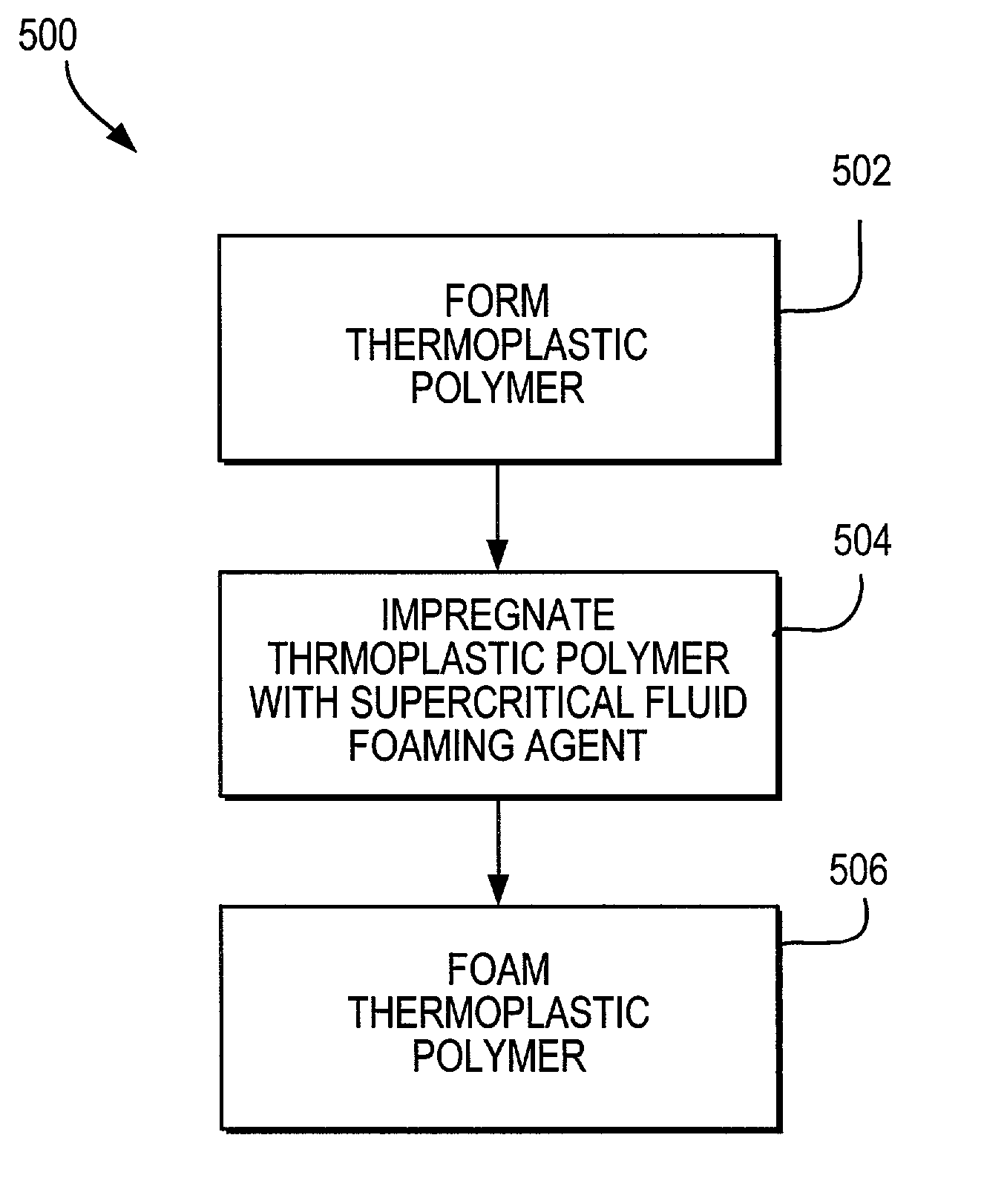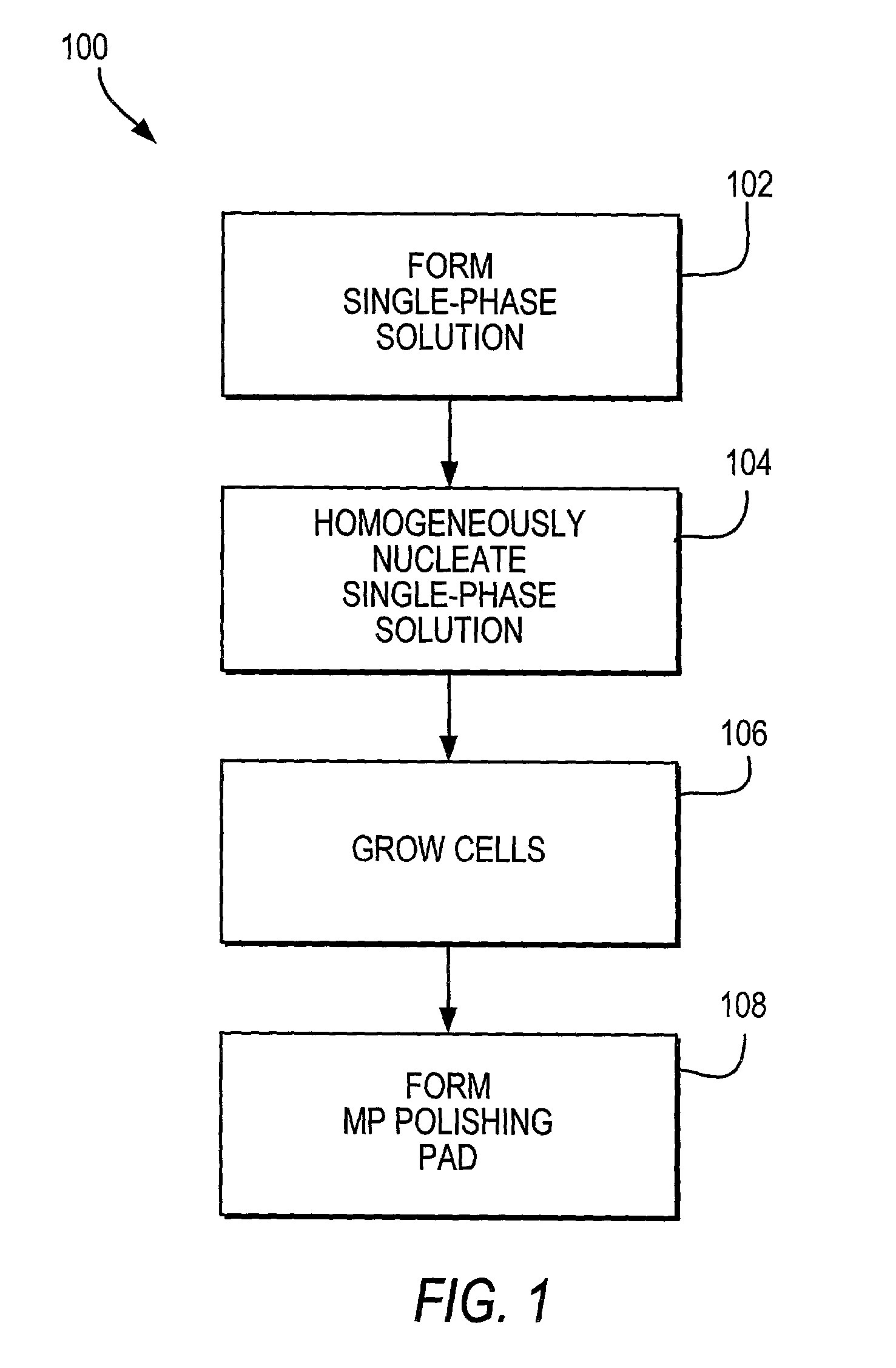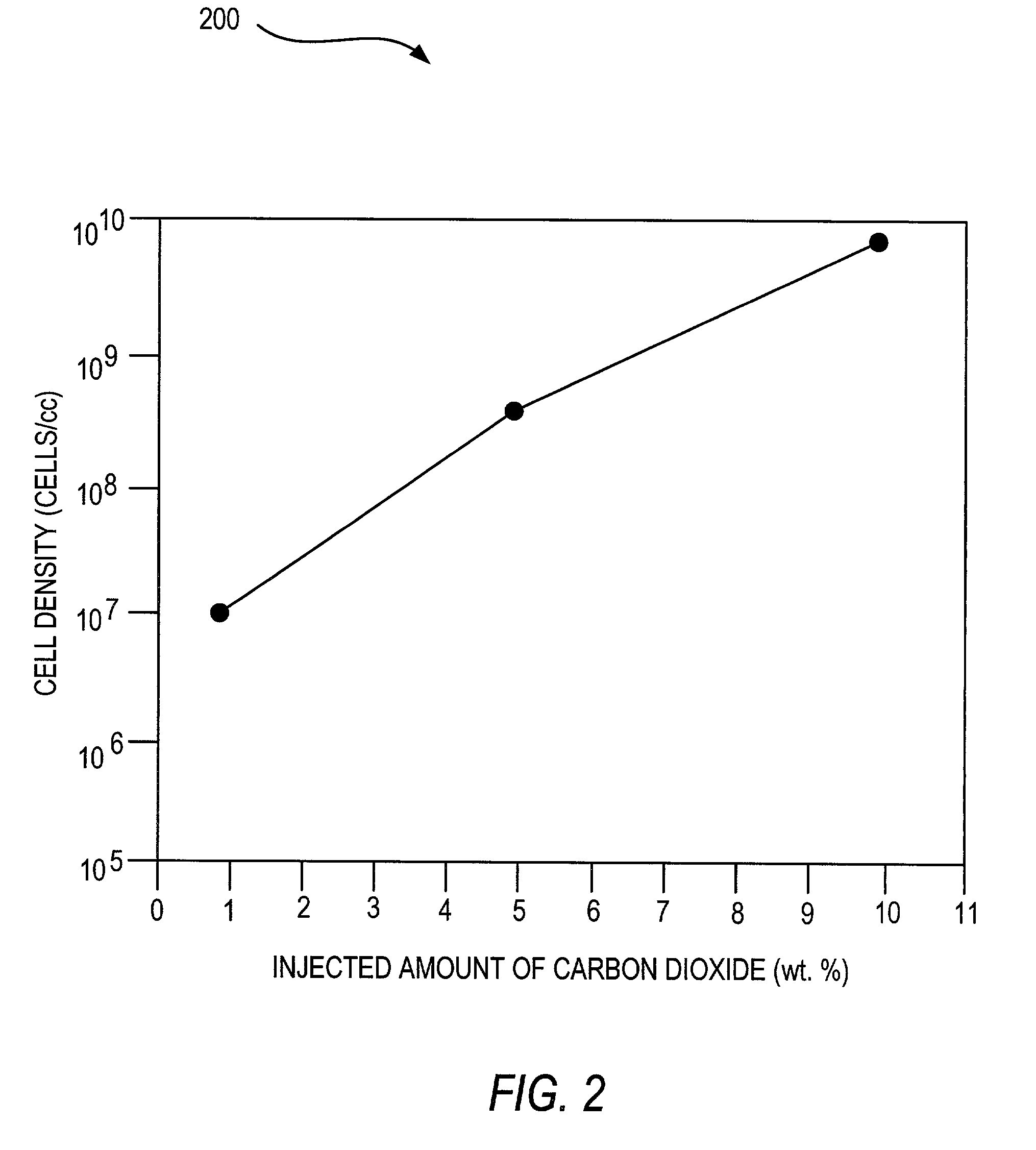Foamed mechanical planarization pads made with supercritical fluid
- Summary
- Abstract
- Description
- Claims
- Application Information
AI Technical Summary
Benefits of technology
Problems solved by technology
Method used
Image
Examples
Embodiment Construction
[0024]The invention uses known methods of fabricating foamed thermoplastic polymeric materials using supercritical fluids to fabricate thermoplastic polymeric mechanical planarization (“MP”) polishing pads.
[0025]FIG. 1 shows an exemplary method 100 for fabricating foamed thermoplastic polymeric MP pads using supercritical fluid in accordance with the invention. At step 102, a single-phase solution consisting essentially of a molten thermoplastic polymer and a supercritical fluid foaming agent is formed. A supercritical fluid is a material that is concurrently maintained at temperatures and pressures exceeding the critical temperature (Tc) and critical pressure (Pc) of the material. The supercritical fluid foaming agent is preferably supercritical carbon dioxide (Tc=31.1° C., Pc=1071.3 psi) or supercritical nitrogen (Tc=−147.0° C., Pc=492.3 psi), but may be any other supercritical fluid that is gaseous under obtainable MP pad processing conditions and that readily dissolves in a ther...
PUM
| Property | Measurement | Unit |
|---|---|---|
| Temperature | aaaaa | aaaaa |
| Pressure | aaaaa | aaaaa |
| Density | aaaaa | aaaaa |
Abstract
Description
Claims
Application Information
 Login to View More
Login to View More - Generate Ideas
- Intellectual Property
- Life Sciences
- Materials
- Tech Scout
- Unparalleled Data Quality
- Higher Quality Content
- 60% Fewer Hallucinations
Browse by: Latest US Patents, China's latest patents, Technical Efficacy Thesaurus, Application Domain, Technology Topic, Popular Technical Reports.
© 2025 PatSnap. All rights reserved.Legal|Privacy policy|Modern Slavery Act Transparency Statement|Sitemap|About US| Contact US: help@patsnap.com



